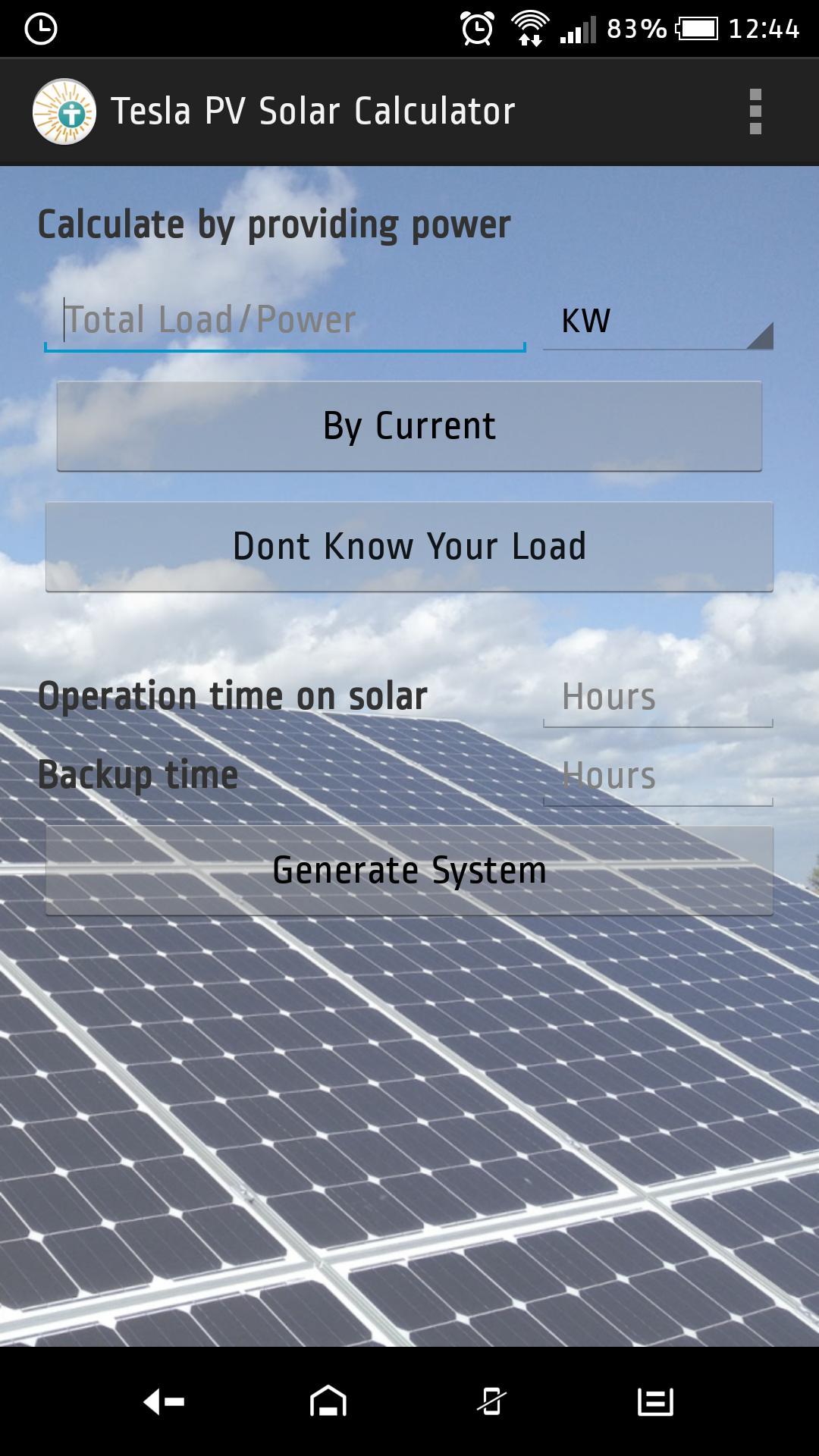This solar angle calculator tells you the optimum angle to get the best out of your system. To get the best out of your photovoltaic panels, you need to angle them towards the sun. The optimum angle varies throughout the year, depending on the seasons and your location and this calculator shows the difference in sun height on a month-by-month basis.
- Pv Solar Calculators
- Pv Solar Calculator California
- Pv Solar Calculator Software
- Nrel Solar Pv Calculator
- Solar Pv Calculator Excel Sheet
CSI PV Calculator - Current. CSI PV Calculator - Archived. MASH PV Calculator - 1C/1D. MASH PV Calculator - 1A/1B. MASH PV Calculator - Archived. Other Solar Generating Technologies. User Documentation. CSI Incentive Calculators CSI Standard PV. The Photovoltaic (PV) solar panels are used in residential installations come in varying wattages from 150 watts to 370 watts per panel. You calculate the power supplied or calculate a solar energy system output from the panel to the battery using its Watts-peak and exposure. This MS Excel spreadsheet calculates the following: Total Demand Load. Size of Solar Panel. Select Type of Connection of Solar Panel. Select Rating of Each Solar Panel. Energy from Solar Panel as per Daily Sun lights. Size Battery Bank. Select Type of connection of Batteries in Battery Bank. Size of Inverter. Using a solar cost calculator is an excellent way to figure out specific numbers for your circumstances. Each home consumes a different amount of electricity based on various factors. Having said that, if you take a 2,000 square foot home, the average solar panels cost equates to somewhere between $15,000 and $40,000.
Of course, the sun is continually moving throughout the day and to get the very best from your photovoltaic system you would need to angle your panels to track the sun minute by minute. You can buy an automated solar tracker to do this (see picture on right). Unfortunately, the expense of a tracker means that for most applications they are more expensive than buying additional panels to compensate. The amount of power a solar tracker uses in order to track the sun also negates much of its benefits.
The sun is at its highest at solar noon each day (this occurs exactly half way between sunrise and sunset) and this calculator shows the angle at that time of day. At solar noon, the irradiance from the sun is at its very highest and you can generate the most power. In the northern hemisphere, the sun is due south at solar noon.
Therefore, to get the very best out of your photovoltaic panels, you would typically face them due south at the optimum angle so that the panel is receiving as much sunlight as possible at this time.
The correct angle for your project will depend very much as to when you want to get the best out of your photovoltaic system. If you want to get the best performance during the summer months, you would angle your photovoltaic panels according to the height of the sun in the sky during these months. If you want to improve your winter performance, you would angle your photovoltaic panels towards the winter months in order to get the best performance at that time of year.
Pv Solar Calculators
If you have the opportunity to adjust your photovoltaic panels throughout the year, you will benefit from having the optimum performance from your solar system all of the time.
Pv Solar Calculator California
This solar angle calculator allows you to calculate the optimum angle on a month-by-month basis.
If you like this calculator please share on Facebook
Pv Solar Calculator Software
Solar Position Calculator | Earth System Research Lab |
Please note that this web page is the old version of the NOAA Solar Calculator.Back when this calculator was first created, we decided to use a non-standarddefinition of longitude and time zone, to make coordinate entry less awkward.So on this page, both longitude and time zone are defined as positive to thewest, instead of the international standard of positive to the east of thePrime Meridian.

Nrel Solar Pv Calculator
We maintain this page as a courtesy to those people who, for whatever reason,prefer the old calculator. For the rest of you, we encourage you to insteadclick here to try the updated version of NOAA's Solar Calculator

Directions:
- Select a location from the City pulldown menu, OR select 'Enter Lat/Long ->' from the pulldown menu, and manually enter the latitude, longitude and time zone information in the appropriate text boxes. For this calculator,latitude is positive to the NORTH, and longitude is positive to the WEST ofthe prime meridian.
Latitude and Longitude can be in deg/min/sec, or decimal degrees entered in the 'Deg:' field. (If you enter decimal degrees in the degrees field, please clear the minutes and seconds fields, or they will be added in.) If you select a city from the pulldown menu, the latitude, longitude and time zone fields will be filled in by the program. If you want to input latitude, longitudeor time zone manually, be sure toselect 'Enter Lat/Long -->' from the City pulldown box, or your numbers willbe overwritten by the selected city's location.
You can enter a different time zone for a location by selecting 'Enter Lat/Long -->' in the City pulldown box. Otherwise the time zone associated with the selected city's Local Standard Time will be automaticallyentered. Selecting 'Yes' in the Daylight Saving field will cause the solar positioncalculation to assume the current time has been adjusted forward one hour fromstandard time. If you are uncertain of the time zone for a location, refer to our Time Zone Table.
The program retrieves the current date and time from your computer, and fills in these values in the date/time fields. To perform calculations for a different date, simply select the month in the pulldown box, and enter the day and four digit year in the appropriate input boxes. Time of day for the calculation can be changed in the same way.
Hit the 'Calculate Solar Position' button. Once the calculations are complete, you may use your browser's 'Print' function to obtain a hardcopy of the results. Results are given in the following units: Equation of Time in minutes of time; Solar Declination in degrees, with positive to the north;Azimuth in degrees clockwise from north; Elevation in degrees up from thehorizon; Cosine of Solar Zenith Angle is unitless.
Note that for latitudes greater than 72° north or less than 72° south, accuracy may be lower due in part to the effects of atmospheric refraction.
Solar Pv Calculator Excel Sheet


| Sunrise/Sunset Calculator Calculation Details Solar Calculator Links | Time Zone Table Solar Calculator Glossary Back to SRRB Homepage |